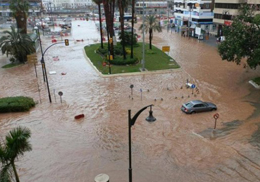
For his Master’s Final Project, Carlos Ruiz-Tagle has researched on the several forms in which Spain and Chile have legally responded to natural disasters occurred in their countries.
28 september 2016
- Title: “Legal response to natural disasters in Spain and Chile”
- Author: Carlos Ruiz-Tagle Vial
- Tutor: Mario Clemente Meoro
The MFP is titled Legal response to natural disasters in Spain and Chile and was defended last Monday, 12th September before the examining board formed by Josefina Boquera, María Luisa Atienza and Jesús Olavarría.
The objective of this Master’s Final Project consists on a scientific legal research on the form in which Spanish and Chilean Law have faced natural disasters. We aim to highlight the contractual treatment which makes enforceable a reparation of the damage caused by these catastrophes. Therefore, this study shall focus on the role of private insurances contracts covering extraordinary risks and if these compensations require be complemented by other devices to obtain an effective reparation.
Human beings have always been interested in natural disasters, as they are directly affected by the damage, death and displacement resulting from the impressive strength of nature. Humans and Earth interact closely like light and shadows, feeding one from the other.
Calamities generate a climax of instability, leading people to reflect on the fragility of our footholds and the vague border between life and death. However, surprisingly, the immediate requirements of our lives make us forget about the past and we even build again in places previously destroyed by natural disasters.
This way, floods take place in Spain like uncontrollable torrents, causing severe damage to properties and people. Only in 2014, compensations for Spanish floods reached the astonishing total of 124,400,000 million Euro. In the case of Chile, this is a cyclical reality. Ports devastated by tidal waves, like Talcahuano o Valdivia, are rebuilt in the same places. Cities or towns affected by earthquakes, like Concepción; or the energy of volcanos, like Chaitén, are rebuilt again on the remaining debris of the catastrophe.
This topic and its emerging consideration captured our interest for the legal consequences they undoubtedly have in the development of public policies. These measures must assume the loss of public goods and offer their services to defenceless people. Aids and solidarity cannot be required, only grateful to. Furthermore, our interest goes beyond, since not only States and international institutions are involved, but also private entities, trying to overcome the difficulties of dealing with these phenomena. We are interested as well in the devices created by the market to face these risks. That is the reason why we shall try to examine how Law is affected by natural disasters, specifically concerning the relations between individuals. Besides, the legal instruments employed in order to tackle the consequences. This is a fascinating challenge with innumerable repercussions to life on society.
Regarding the structure, this work is divided into three chapters. The first chapter shall describe natural disasters in general terms: concept and relevant characteristics - particularly predictability and the Spanish and Chilean laws for fortuitous cases and force majeure. The second chapter is focused on the current forms of social organisation to face natural disasters. In this chapter, the author addresses the distinction of disasters according to natural elements - water, air, fire and earth - and on the classification of affected individuals.
The third and last chapter examines applicable legal regimes and the forms of social organisation in society, the rules of the State on this ambit and a selection of some regional regulations referring these points.
The author distinguishes the types of insurance contracts with coverage for those with life insurances, highlighting the relevance of many forms of commercial contracting in the coverage of natural disasters. At the end of the research, it is broached the relation of private contracting and public funds or institutions in the coverage of the risks of natural disasters.














